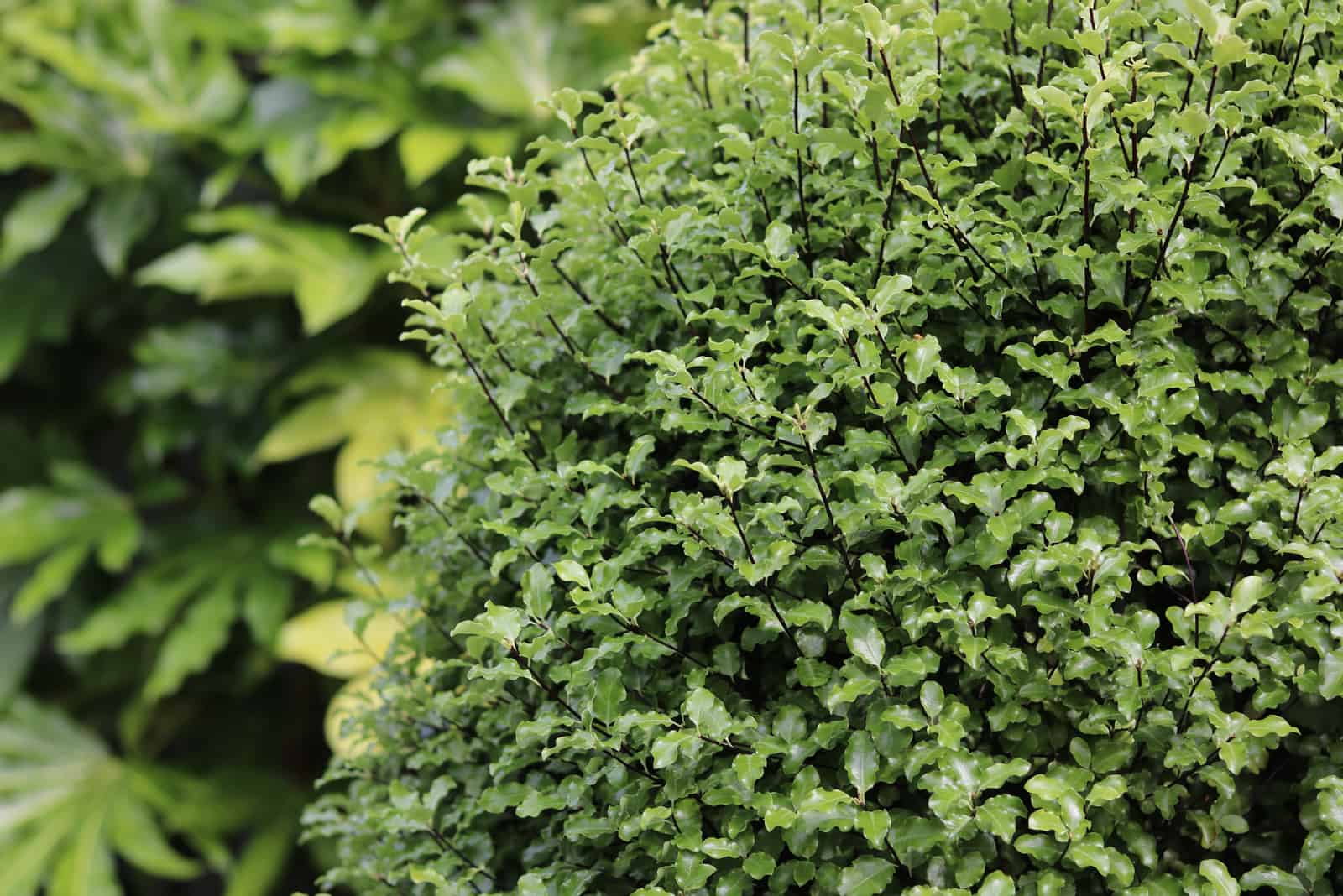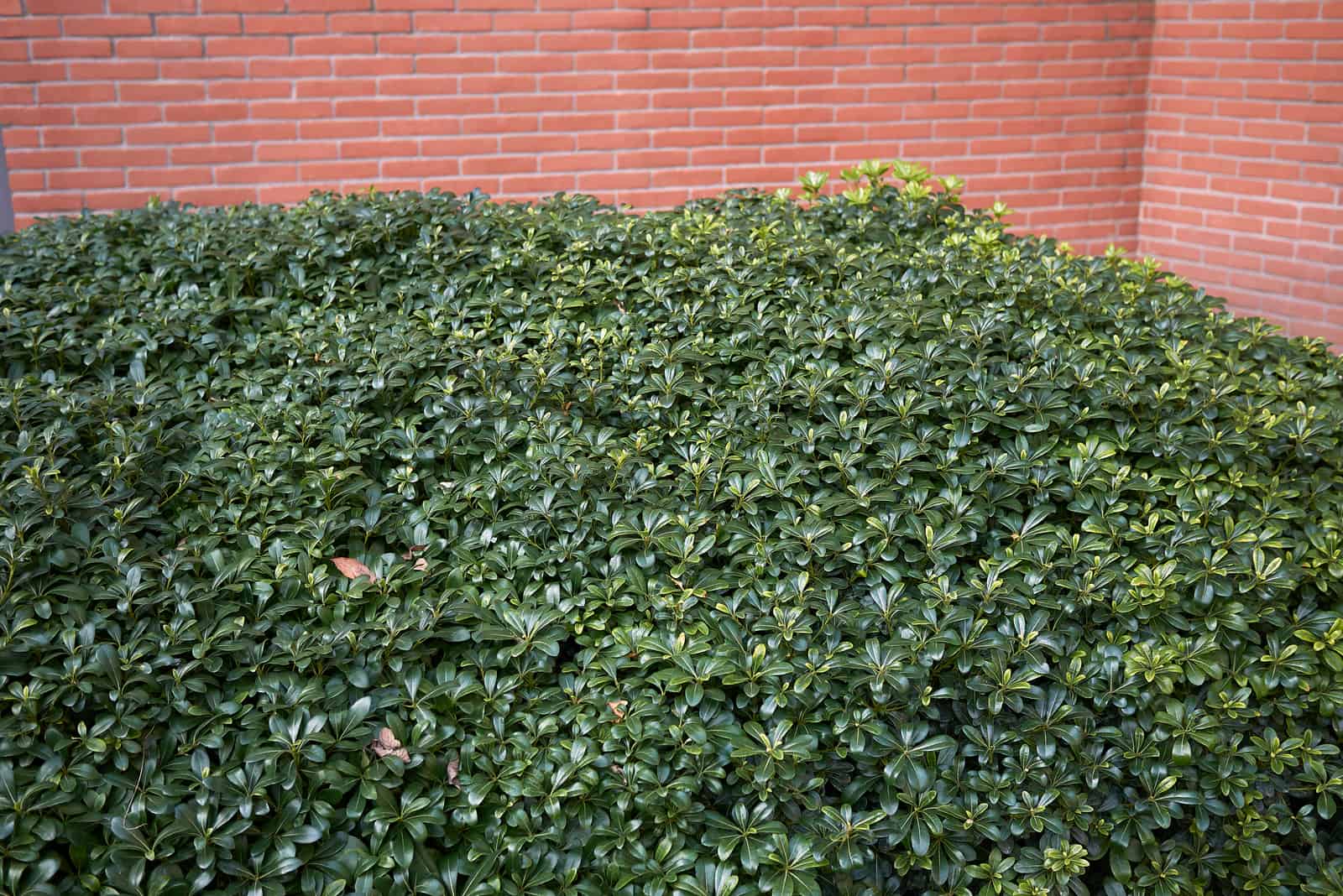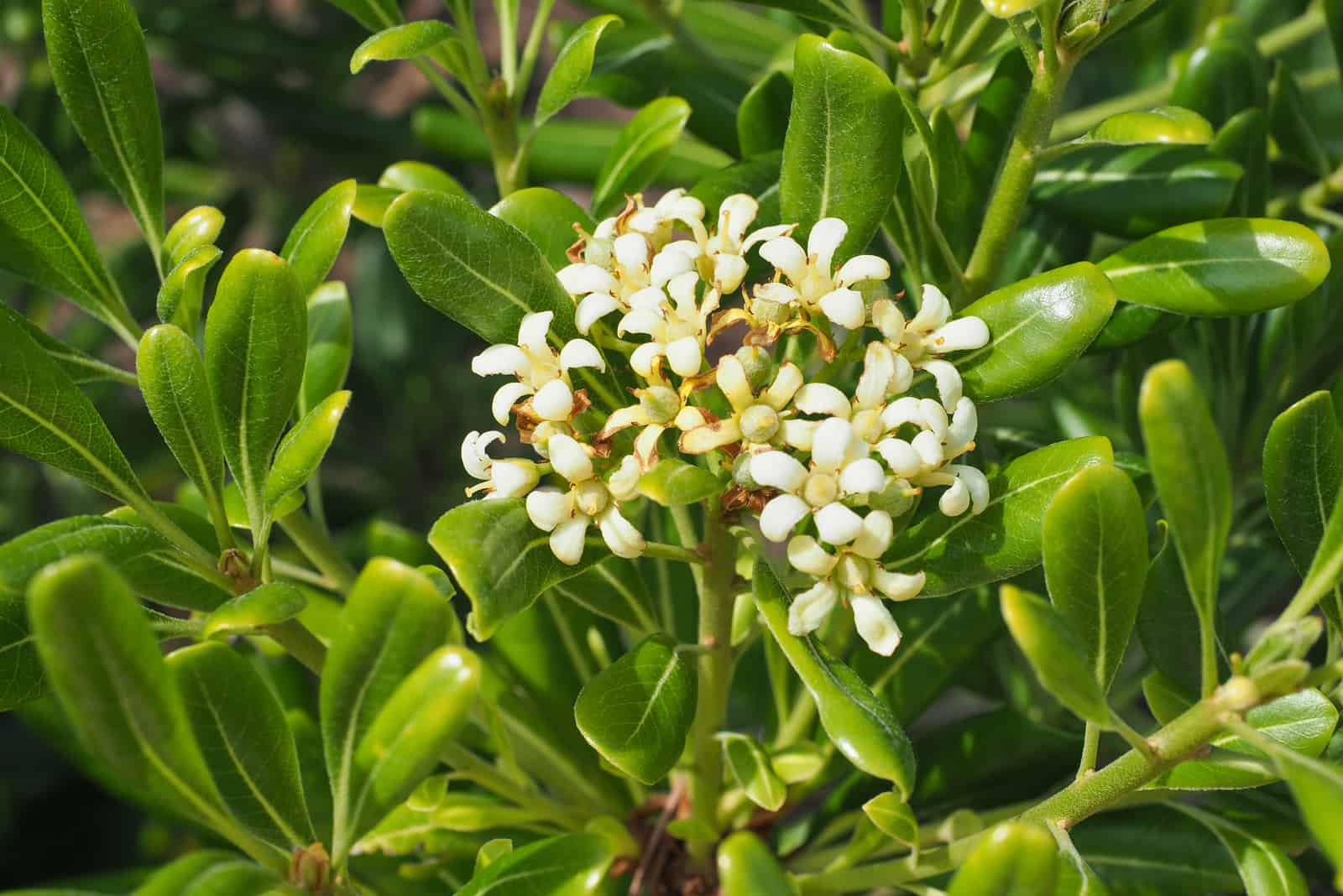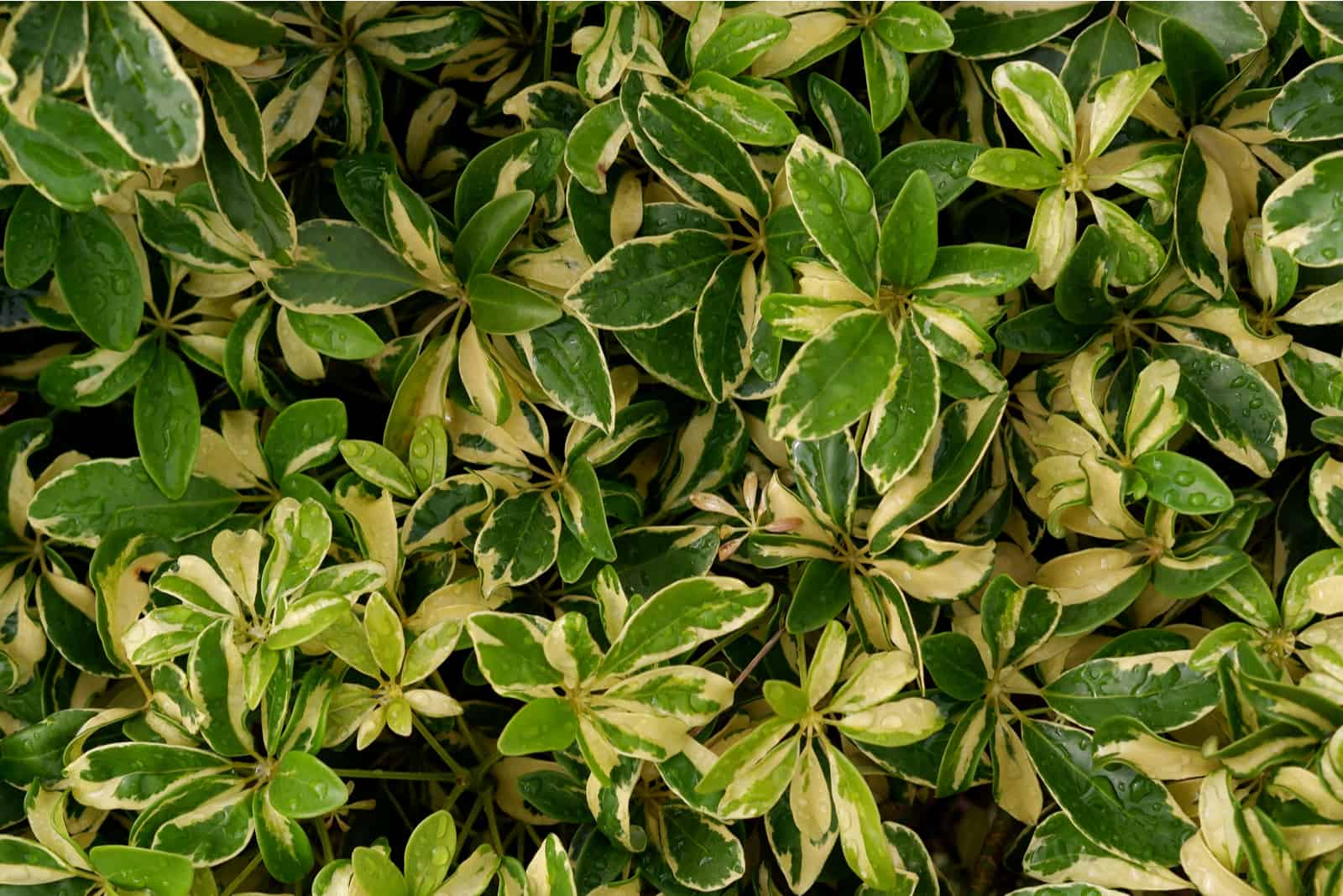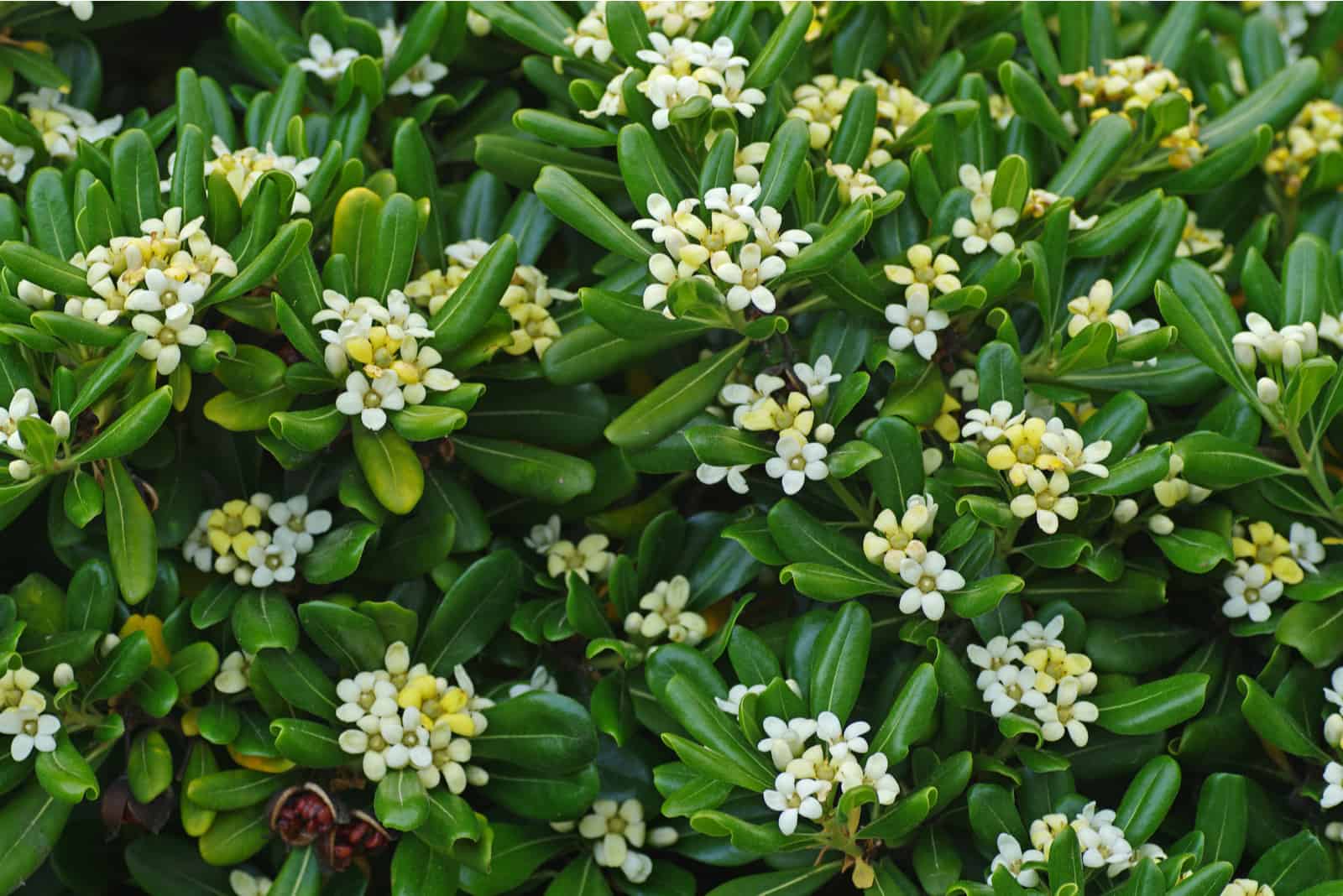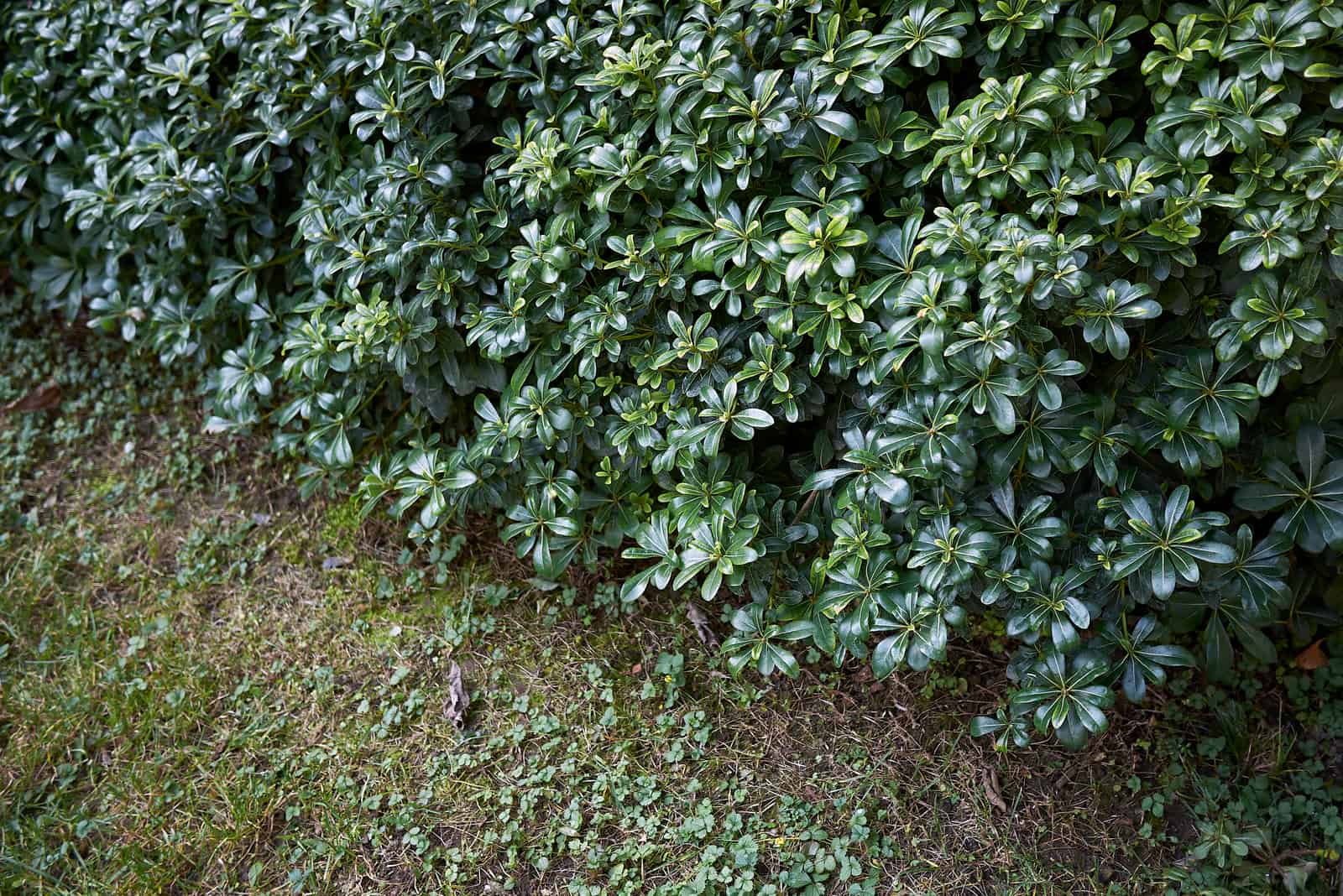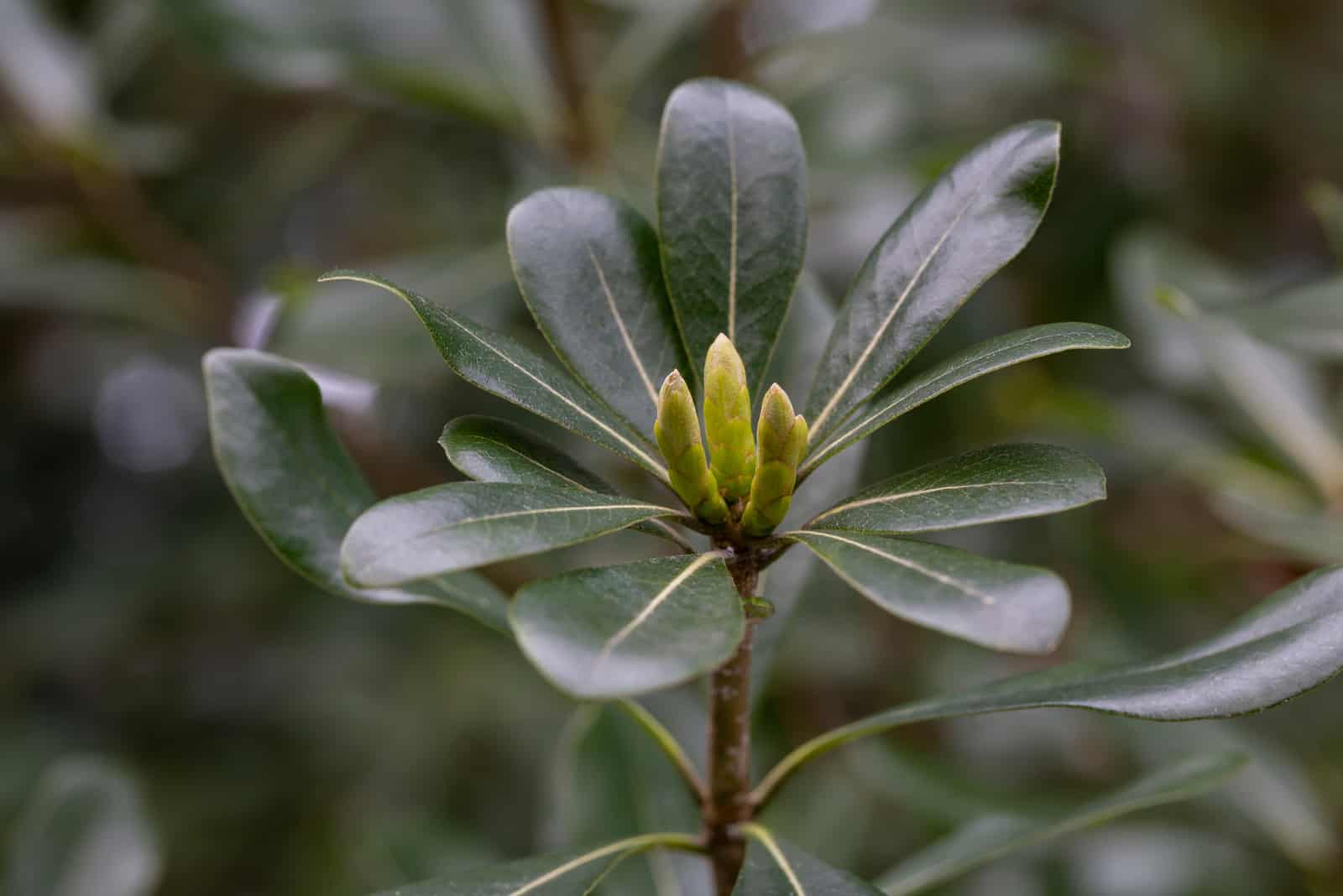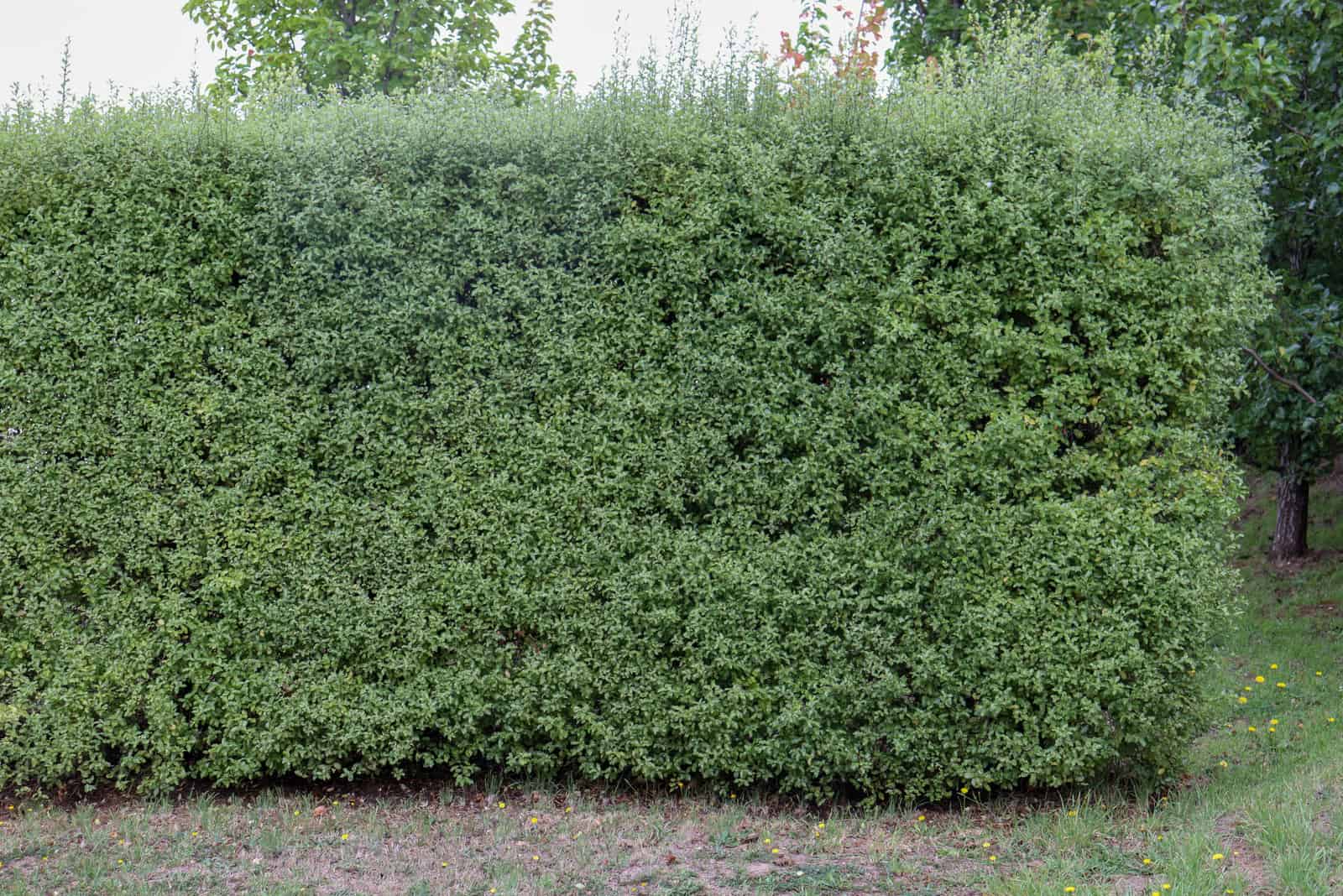Want to have more privacy in your backyard, but don’t want to install any fences or gates?
Oh do I have a perfect solution for you — start growing a Pittosporum Hedge!
Pittosporum is a plant that is made out of small trees that are grouped together and make evergreen shrubs. These plants are easy to take care of, and they are ideal for gardens, patios and pathways.
Not only will they provide you with privacy, but they are going to make your garden look absolutely stunning!
Check out the rest of this article and find out how to grow and take care of a Pittosporum Hedge!
How To Grow a Pittosporum Hedge
Pittosporum plants do not have any special requirements — they are quite easy to deal with, which is why there are so many varieties of these plants available.
If you want to grow your own Pittosporum hedge, follow the care guide below to maintain a healthy-looking hedge in your garden.
Soil Requirements
Pittosporum plants are versatile and they can grow in different soil types. However, they will thrive in soil that is well-draining and rich in nutrients.
Prepare your soil before planting by adding fertilizers in compost into the soil. You can also add mulch around the base of your plants, to retain moisture and keep the soil temperature cool.
Temperature And Light Requirements
These plants can grow in different climates, thus the preference temperature depends on the particular type of pittosporum plant. They can be frost-hardy, and they can tolerate very hot climates as well.
When it comes to light requirements, they grow best in full sun and partial shade. They will need at least six hours of sunlight exposure throughout the day to encourage new growth.
Water Requirements
Pittosporum plants are not needy when it comes to water; they are drought tolerant and can survive a long time without being watered.
However, you should water these plants thoroughly when they are young and have just started developing, because they need to establish their root system. Mature plants should be watered only during extremely hot temperatures.
Spacing
When it comes to creating an ideal hedge for your garden, it is probably most important to assess adequate spacing. With Pittosporum plants, you can separate the plants about three feet from one another — this length is more than enough because they grow tall and dense foliage.
Fertilizing Requirements
These plants are not heavy feeders, and they won’t be needing frequent fertilizing. Some growers tend to add fertilizers with 17-17-17 formula during spring to yield a dense, green foliage for their hedge.
Pruning
Pruning is the most important part of keeping the Pittosporum hedge nice and tidy! Pittosporum plants have a rapid growth rate, which is why you will have to prune it more often, especially in the late spring and at the end of the summer. Pruning will enable your Pittosporum plant to produce more dense foliage, and you can also create different shapes and patterns when pruning!
What Are Pittosporums
Pittosporum are fast-growing, diverse plants that grow dark-green foliage all year, which makes them perfect to use as hedges, ground covers, on patios and so on. They grow dense green leaves that will provide you privacy and make your garden look more lively.
They are low maintenance plants that can grow almost anywhere — I am sure that you can find one that is suitable for your region!
Though maybe a boxwood hedge, perennial camellia or even a ligustrum (also known as a Waxleaf privet) would be one of your first options, you should look into different cultivars of Pittosporums and consider them for your hedge instead.
The family of Pittosporaceae has about 130 members — you can pick and choose from any of them!
Here is some general information about Pittosporums:
• New Zealand native
• Hedge 50 cm – 3 m
• Lightly trim for shelter or screen 1.5 m – 3 m
• Leave untrimmed for shrub 3-5 m
• Flowers – Dark maroon-black, spring-summer
• Highly fragrant
• Suits all conditions – full sun or part shade
• Thrives in damp conditions
• Can tolerate drought
• Stephen’s Island variety tolerates wind and coastal exposure
• Frost hardy
• Evergreen
Types Of Pittosporum Hedging Plants
Check out these different types of Pittosporum plants that can be used for hedging, and choose the best one for your garden!
You can also watch this video for more information about different varieties:
1. Pittosporum Tenuifolium ‘Silver Sheen’
The Pittosporum ‘Silver Sheen’ is a famous cultivar that grows silvery-green leaves, hence the name Silver. The leaves are oval-shaped and grow densely, which make this cultivar perfect for hedging — they can withstand pruning as well, so you can really express your creativity and make shapes out of your shrubs.
They are able to grow from about 15 to 18 feet tall, and about 10 feet wide — so you can make a large hedge out of these.
2. Pittosporum Tobira or Japanese Pittosporum
This type of Pittosporum is primarily grown as a decorative plant and used for landscaping designs. It grows spoon-shaped leaves with a texture similar to leather, and they also grow densely which is why they can be used as a hedge.
What is interesting about this type of Pittosporum is that it grows aromatic white flowers that make your hedge even more dreamy!
They prefer well-draining soil, and it is quite easy to maintain a desirable shape as they grow in a rounded shape, so the pruning does not require great effort. You can grow them in full sun or part shade. They can grow up to 13 feet tall, and 8 feet wide.
3. Pittosporum Tobira Variegata
This cultivar differs from the rest, mostly because of its variegated foliage — they grow glossy green leaves with white edges around them. They grow densely, thus making a most desirable privacy screen for your backyard.
Pittosporum Tobira Variegata also produces white flowers; and they are often grown as trees, with green, dense foliage covered with white flowers — you can do this too, just cut the lower stems to make it look like a tree.
Variegata grows up to 10 feet tall, which is why you can use it as a living wall, and of course, as a hedge.
4. Pittosporum Tenuifolium or Pittosporum Nigricans
Pittosporum Nigricians grows in U.S. Department of Agriculture (USDA) hardiness zone from 8 to 11; it is an evergreen shrub that grows silvery leaves, which make a perfect contrast to dark stems in the background.
It can grow up to 30 feet tall, however, I doubt you need that much of a privacy screen.
This cultivar is native to New Zealand, which is where it is often referred to as Kohuhu. It also grows majestic purple flowers in the late spring, making this type ideal for landscaping design.
5. Mojo Pittosporum or Pittosporum tobira ‘CNI Three’
This cultivar is a dwarf shrub that grows glossy green leaves with white and creamy variegation all over the leaves.
Mojo Pittosporum is usually grown as a border plant, due to its small growth — they only grow up to 1 foot tall. However, its foliage is pretty and cheerful, which is why it is often chosen as a low hedging plant.
6. Pittosporum Undulatum or Australian Cheesewood
This type of Pittosporum plant is known for its large, glossy green leaves. Not only does it produce large leaves and aromatic flowers, it also produces small, orange fruits.
Just imagine mini oranges all over your hedge!
Pittosporum Undulatum is one of the tallest types of Pittosporum — they can grow up to 50 feet tall. Due to their intensive growth, they are considered invasive plants in Australia.
7. Marjorie Channon Pittosporum
Marjorie Channon Pittosporum is a cultivar that is primarily used in ornamental purposes. It produces gray-green leaves with unique creamy edges around them. This is an evergreen plant, which is why it is an ideal hedging plant.
This plant has a small size, so aside from hedging, it can also be grown as a desirable bush in the corner of your garden.
Pittosporum Hedge: Common Problems
Though it may seem a perfect solution for your garden, the Pittosporum hedge might pose some issues when growing.
But don’t worry, they can be easily fixed!
Let’s look at some of the common problems and how to deal with them.
Diseases And Pests
Pittosporum are prone to pest infestation, particularly aphids and mealybugs.
You should regularly check the leaves of your hedging plant to see if there are any changes occurring. For instance, if you notice white spots on the leaves, it can be an indicator of powdery mildew.
You can easily get rid of these annoying pests by using different insecticides or sprays, as well as watering them with water and insecticide soap.
Leaves Turning Brown
Leaves changing color is a common occurrence amongst plant varieties, and it usually indicates some sort of issue — usually watering.
In this case, if the leaves in your Pittosporum Hedge start turning brown, it might be due to either over watering or under watering.
If you have been over watering your plant, it might lead to root rot, which reduces leaf growth, and you might end up with patches in your hedge.
Under watering can be easily fixed — just water your plant more frequently and thoroughly until it starts looking like itself again.
Frequently Asked Questions
1. Which Pittosporum grows the fastest?
Most Pittosporum plants are fast-growers; however, by far the fastest Pittosporum variety is Kohuhu, also known as Pittosporum Tenuifolium. It can grow up to 30 feet tall, and also produce majestic purple flowers in the late spring, making this type ideal for landscaping design.
2. What is the height of the Pittosporum?
The height of Pittosporum plants varies among different varieties. For instance, Pittosporum Undulatum can grow up to 50 feet tall, while there are some dwarf varieties like Mojo Pittosporum that only grow to 1 foot tall.
3. How far apart should you plant Pittosporum for a hedge?
This depends on the Pittosporum variety — they can have different widths. Generally speaking, most Pittosporums are usually planted about 3 feet apart from one another, which is enough for a dense Pittosporum hedge.
Final Thoughts
If you want to have more privacy but still maintain that green, jungly vibe in your garden, then I would definitely recommend you get a Pittosporum hedge!
Pittosporum plants can grow in different climates, don’t have soil preference and are pretty easy to take care of.
Pittosporum can be used to create decorative hedges with different shapes and patterns; the flowers produced by these plants makes them look even more appealing.
You definitely won’t make a mistake going with a Pittosporum hedge!
Like this post? Share or pin it for later!

